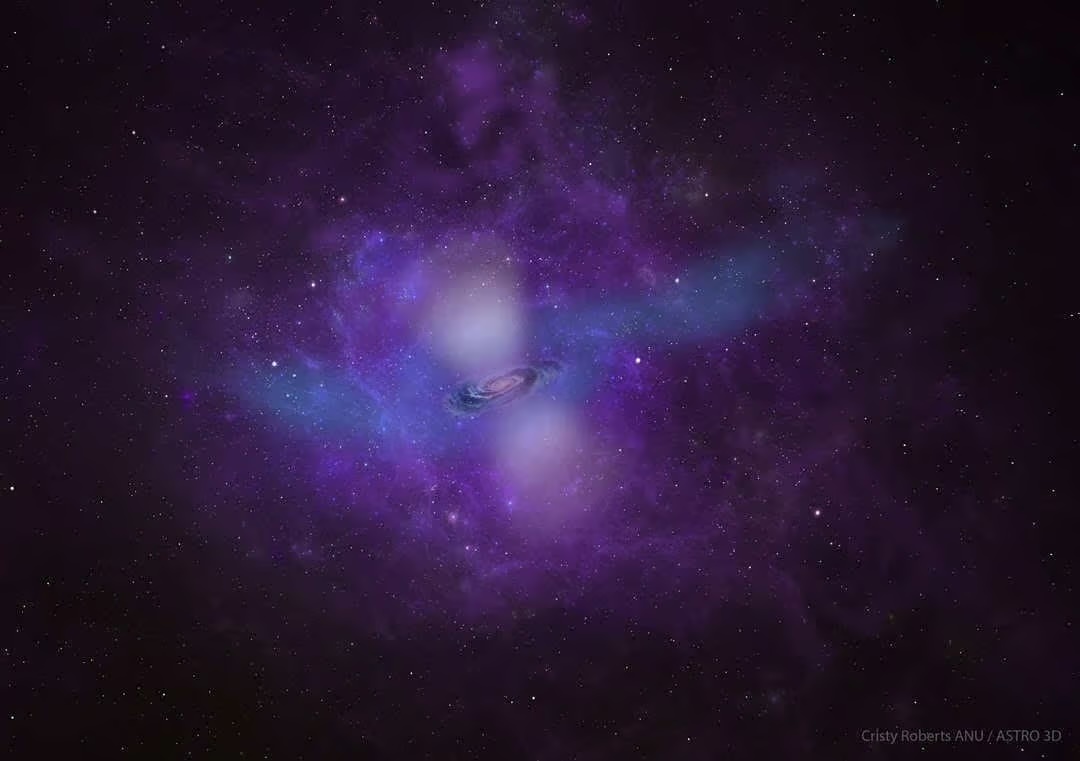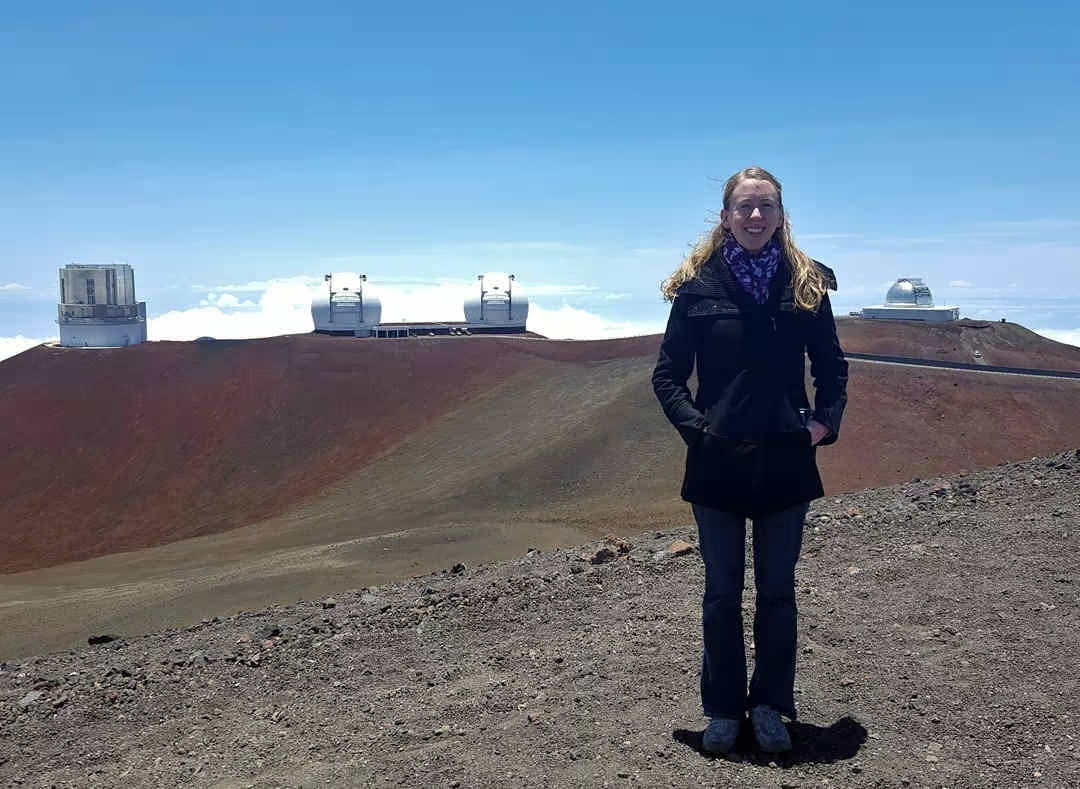9.09.2024
The shroud of gas around another galaxy has been photographed and analysed pixel by pixel for the first time.
It shows that galaxies are much bigger than we thought and that the Milky Way is already interacting with our nearest galactic neighbour, the Andromeda galaxy.
Researchers have published in Nature Astronomy their analysis of an image of starburst galaxy IRAS 08339+6517.
Starburst galaxies are those producing stars at an unusually high rate.

The gas shroud around starburst galaxy IRAS 08339+6517. Credit: Cristy Roberts ANU/ASTRO 3D.
IRAS 08339+6517 is estimated to be 80.2 megaparsecs – about 260 million light-years – away. For comparison, Andromeda is about 2.5 million light-years – or just 0.8 megaparsecs – from us.
Through conventional telescopes, galaxies have very distinct end points where the light from stars within the galaxy stop. But the stars account for only about a third of the total normal matter (ignoring dark matter) in the galaxy.
About 70% of normal matter in galaxies is actually contained in a shroud of gas around the stellar disc – also called the circumgalactic medium (CGM). This gas halo has remained a mystery in astronomy for decades.
Previously, astronomers were only able to study this gas shroud by measuring the light passing through it from an object behind the galaxy. Light absorbed by the gas can be used to analyse its composition.
New deep imaging has revealed the halo of gas around IRAS 08339+6517 – the first time this has been done for any galaxy.
The stellar disc of the galaxy extends just 7,800 light-years from its centre. The new image reveals the gas around it extends at least 100,000 light-years into deep space – going right to the edge of the area the astronomers were able to look.
“We found it everywhere we looked, which was really exciting and kind of surprising,” says lead author Nikole M. Nielsen, a researcher with Swinburne University and an assistant professor at the University of Oklahoma in the US.
Nielson is also a research scientist at the Australian Research Council Centre of Excellence for All Sky Astrophysics in 3D (ASTRO 3D).
“We’re now seeing where the galaxy’s influence stops, the transition where it becomes part of more of what’s surrounding the galaxy, and, eventually, where it joins the wider cosmic web and other galaxies,” Nielson adds. “These are all usually fuzzy boundaries.”
In this case, Nielson says, the researchers found a clear boundary between the circumgalactic medium and the interstellar medium – the space between star systems within a galaxy.
The astronomers used the Keck Cosmic Web Imager in Hawai‘i to observe the ionisation of the gas by radiation from the stars in the galaxy.

Dr Nikki Nielsen at the Keck Observatory.
“It is the very first time that we have been able to take a photograph of this halo of matter around a galaxy,” says ASTRO 3D director Emma Ryan-Weber.
Nielson says that the study is a step toward understanding how galaxies evolve and what happens to the gas in and around them.
“The circumgalactic medium plays a huge role in that cycling of that gas,” says Nielsen. “So, being able to understand what the CGM looks like around galaxies of different types – ones that are star-forming, those that are no longer star-forming, and those that are transitioning between the two – we can observe differences in this gas, which might drive the differences within the galaxies themselves, and changes in this reservoir may actually be driving the changes in the galaxy itself.”
Quelle: COSMOS
